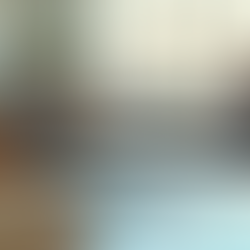Home Economics Revision Quiz On Cookery, Laundry, Entertainment …
- Ngechent

- Jan 15, 2023
- 7 min read
Home Economics Revision Quiz
HOME ECONOMICS
Home Economics is a subject made up of different subject areas such as_______ cookery, laundry, needlework, housecraft, and mothercraft.
COOKERY
Food is cooked in the_____ kitchen
The kitchen is also called the ______ domestic workshop.
Essential kitchen equipment includes ____
vegetable knife,
chopping board,
kettle for boiling water,
nutmeg grating cutter sieve for liquids,
cooking pots,
pastry board,
knife,
perforated spoon,
sieve for flour,
flours dredger,
soup saddler,
fish slicer
mortar and pestle
meat mince,
palette knife
the cone-shaped mud fireplace
kerosene tin cooker,
gas cooker,
stove,
rolling pin,
The kinds of cooking places include:
The hearth,
iron tripod,
A mixture of well-beaten flour and liquid is called ____ dough
Putting food in the oven to get top brown and attractive color is called _______browning.
The mixture of yeast and sugar in bread making is called ______ creaming.
Onions, tomatoes, crayfish, pepper, and spices are called _____ingredients.
Cooking food with egg or water and sugar to give it a shining and attractive look is known as ______
A method of cooking freshly broken unbeaten eggs in boiling water is ______
Cooking food below the cooking point so that bubbles do not come up frequently is to _______ simmer.
Food can be cooked in two main ways namely____ by moist heat and by dry heat.
We boil, steam, fry, and stew by ______ moist heat
By dry heat, we _______ roast, grill, and bake.
A method by which food is cooked in boiling water is ______
Cooking food in hot oil is _______
Some four methods of frying include ______
dry frying,
deep frying,
shallow frying, and
wet French frying.
Good food in very little liquid in a covered pot with gentle heating is _______
Cooking food with steam from boiling water is called __________ steaming. E.g., Koki, puddings
Cooking food in an open fire is called ____roasting. (corn, plantains)
Cooking over, under, or in front of an open fire is ___grilling g. (fish, and meat)
Cooking food in dry heat in an enclosed place is _____
Food is cooked to make it _____ taste good, digest easily, kill germs and preserve.
When planning a meal, the following 5 points should be considered
The number of people,
Their ages and sexes,
Occupation and
The amount of money available.
health condition.
The times of meal are _____breakfast, lunch, and supper
Home Economics Revision Quiz
ENTERTAINMENT
There are two types of entertainment namely______
A well-organized party called ___ formal entertainment.
When people just gather on their own called ____ informal entertainment.
Formal parties include _______
wedding feast
send off parties
VIP parties
receptions
birthday
baptism and
tribal meetings
Informal parties include:
football matches
dancing places
film shows, accidents
deaths celebrations or funerals
Food helps us in the following 4 ways______
It makes us grow
Gives us energy
Protect our bodies from diseases and
Repair our broken tissues
Home Economics Revision Quiz
FOOD FACTORS AND THEIR FOODSTUFFS
Proteins can be got from______
meat,
fish,
eggs,
milk,
beans, and
groundnuts
Carbohydrates can be gotten from ______
cassava,
yams,
maize,
sugar,
honey, and
sugar cane
Minerals are obtained from _____ sodium, potassium, calcium, and iron.
Vitamins A B C D and E are found in ____ food
Water is found in all foods, especially _____
The two forms of yeast are _____ dry yeast and wet yeast.
Extreme heat kills _____ yeast
Extreme cold makes yeast inactive but ______ alive
The five types of yeast include _______
dried yeast,
compressed yeast,
brevets yeast,
palm wine yeast,
over ripe bananas also act as yeast.
TEST FOR FRESH YEAST
It should be firm and crumbles easily
It should smell fresh
It should be fawn (light yellowish brown)
It should become liquid if creamed with sugar.
The stages in bread making are ____
creaming,
setting the sponge
mixing the dough,
kneading
rising,
shaping,
proving and
baking
Yeast is called a raising agent because it is mainly used to raise _________ bread dough.
Things needed when baking are ______
flour,
sugar,
fat,
fruits,
eggs, and
Seven kinds of cakes include
rock buns,
ginger cakes,
queens’ cakes
sponges,
rice fruit cakes,
fairy cakes.
Ice cream cake
The four methods of making cake are ____
creaming,
whisking,
rubbing, and
Types of pastries include
jam tart Cornish pasty,
shortcrust pastry,
bake well tart,
custard tart.
Vegetables eaten raw give us____ vitamin c and water.
Five kinds of salads include ______
green salads,
fresh salads,
cold cooked,
vegetable salads,
fruit salads
The method of cooking eggs is ______
boiling,
frying,
poaching,
scrambling, and
Five uses of eggs are _______
growing children
for glazing pastry,
for coating foods,
for frying
for garnishing.
Custards are made with _____ fresh eggs.
Four kinds of custards include _____
baked,
boiled,
steamed, and
caramel custards.
______ is a light mixture made with fresh eggs. Soufflé
Four kinds of custards include _____ baked vanilla, baked chocolate, orange soufflé, and steamed fish soufflé.
Food for invalids and convalescents includes______
pap from corn,
rice,
scramble egg,
plain soups,
steamed fish,
corn flour moulds
custards and
milk jelly.
Six Points to note when buying fish are________
The eyes should be bright.
The scales should be shining, many, and hard.
The tail should be straight.
The gills should be bright red.
There should be no odor.
The fish should not be soft.
Home Economics Revision Quiz
SETTING THE TABLE
Knives should be placed to the _____ of the plated with their edges pointing to the plates. right
Forks should be placed to the left of the _____
Glasses are placed slightly____ and to the right of the tips of the knives. Above
Spoons are kept to the right of the knives with ___bowls up.
______ should be placed at the right on the line below the plates. Hot beverages
Bread and butter plates should be placed ____ above the forks and to the left.
Home Economics Revision Quiz
LAUNDRY
Laundry is the washing and finishing of _____ dirty garments.
STAGES OF LAUNDRY
Stage Material used
Collection Laundry bags, basins
Sorting A clean place
Mending Needles, thread, buttons
Steeping Basin, water, soap
Washing Basin, water, soap
Rinsing cold clean water
Bleaching stain removers
Drying lines, pegs, hangers
Bluing and starching Blue, starch, boiling water
Damping cold water, brush, cloth
Ironing Blankets, sheets, tables, iron
Folding No equipment
Storing Box, basket, wardrobe
Perishable laundry equipment that gets finished when used includes___
water,
soap,
charcoal,
starch,
blue, and
stain removers.
Non-perishable laundry equipment that lasts for some time includes____
basin,
buckets,
pegs,
hangers,
dry line,
blankets,
irons, and
POINT TO NOTE WHEN WASHING CLOTHS
Some colored materials can easily lose their ____ when washed. dye
If the dye is a loose one, prepare the water for washing e.g., add ______
COMMON TYPES OF IRONS: They include ________
pressure or steam irons,
gas irons
petrol irons,
flat irons
Charcoal iron,
electric irons,
STAINS
Stains are any foreign colors on a dress that may be ___ fresh or dried.
Stains are classified under ____
Vegetable stains,
animal, stains
minerals stains, and
Grease stains.
Vegetable stains include ______
Tea stain,
Coffee stain,
Cocoa stain,
Fruit stain,
Grass stain.
Animal stains include ______
Blood stain,
Urine stain,
Egg stain,
Perspiration stain.
Greece stains are ________
Paint stain,
Petrol stain,
Oils stain,
Tar stain.
Mineral stains include ______
iron rust,
medicine stain,
ink stain.
Fresh stains are removed by___ Using the specific stain agents used for each known stain.
Bleaches are also used to remove ___
BLEACHING AGENTS
Bleaching agents include: ______ sodium hypochlorite and sunlight
Sunlight is a natural ______ bleaching agent.
Greece solvents include_______ petrol, carbon, benzene, etc.
Some 8 stain-removing agents include______
chloride of lime,
carbon,
vinegar,
paraffin,
turpentine,
tetrachloride,
ethyl alcohol,
methylated spirit.
SOME MATERIALS AND THEIR CHARACTERISTICS
Wool: it is a conductor of heat. It retains_______ heat in the body.
Cotton: it is a good conductor of heat. It is good in ______ warm weather.
Silk: it is the strongest thread. It is warm and absorbent. It is ____ easy to handle.
Linen: it is a good conductor of heat and cold to wear. The fibers come from_____ natural resources.
Rayon: it is heavy, slippery, and cool the thread is very weak when _____ wet and dries up very quickly.
NEEDLY WORK
9 tools or requirements for needlework are_______
sewing machine,
chalk or crayons,
sewing sac.
needles,
tape,
measure,
pins,
scissors,
thimbles,
THE SEWING MACHINES
There are three types of sewing machines namely _____
the hand machine,
the foot machine and
electronic machine.
SEAMS
Types of seams include:
Needlework seams e.g., _____ run and fill seams.
Dressmaking seams g., ________
simple seams,
outside stitched seams,
edge-stitched seams and
French seams.
__________are used for shirt seams, shoulder seams. Simple seams
Outside stitched seams are used for _____ many purposes
Run and fill seams are used for _______ under wears Stitches
There are two types of stitches namely
Smoking stitches: examples are_____
stem stitching.
back stitch,
fly stitch,
honeycombing,
cable stitching,
hemstitch flat stitch,
stem stitch,
straight stitch,
feather stitch,
double back stitch,
French knots,
needle weaving and c
oral stitch.
feather stitching,
French stitching,
van dyke stem stitching,
van dyke cable stitching,
sahn stitching,
Embroidery stitches: example include_______ Hems
Eight types of hems include________
face hem,
taped hem,
narrow hem,
shell hem,
wide hem,
bound hem,
face hem, and
slip stitched hem.
Hems are important because_________
They enable the hem to hang well
They make the dress look active
They are decorations on baby wears
They give a well-finished work
Fastenings
7 types of fastening include_________
zips,
buttons and buttonholes,
Press buttons,
button loops,
hook and eye,
Valero hooks and
bars
Paper Patterns
Paper patterns are cut-out papers with correct measurements used as guides in _______ dressmaking
Paper patterns include_____ broom paper patterns
When making the choice of materials you should______
Know the type of dress required e.g., ______ nightwear, daywear, or sportswear.
Choose the material that suits the _____ type of dress.
Decide on the design considering the material and ____ the style
Consider the wear, type, coloring build and ______
Disposal of fullness on garments
Fullness in garments can be disposed of in several ways. Namely
By gathering,
slurring,
gauging,
smoking,
putting on tucks,
by pleats by putting darts,
Darts are used for shaping shirts and skirts from ___ hips to the waist.
Darts are used for shaping sleeves from the_____ elbow to the wrist.
Related:
Home Economics Revision Quiz













































































































Comments